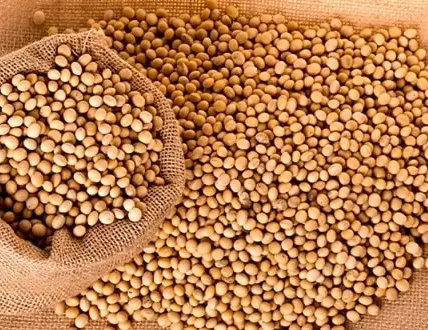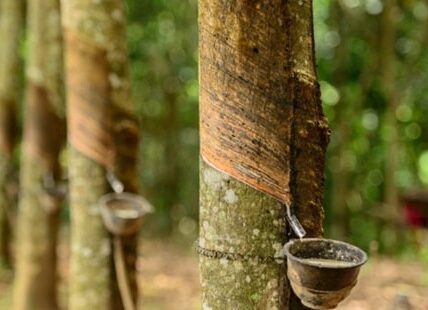The vast and varied sugarcane market is spread all over the world. Not just a sweetening item, the use of sugarcane happens to be multifaceted, with noted contributions in the biofuel and spirit manufacturing as well. Therefore, it is of no wonder that sugarcane market has a strong presence in the global economy as well. Brazil reigns as the top producing country and then, there a more countries offering noteworthy supply of sugarcane. They fill up a great demand. Here we will be talking about the top 10 largest producers of sugarcane, in details.
1. Brazil – 752.9 Million Tons:
The “Sugar King” Brazil produces the most sugarcane. Sugarcane fields occupy millions of acres in this South American behemoth. Tropical weather in São Paulo and Minas Gerais are perfect for sugarcane cultivation. Brazil’s sugar mill efficiency and quantity make it a global powerhouse. Brazil can meet and exceed global demand for this delicious product due to its advanced farming methods and technologies. Brazil’s role as the world’s largest sugar producer shapes global market dynamics and sugarcane’s importance as an agricultural crop. Brazil is excellent at gratifying millions’ sweet tooth and encouraging economic growth via sugar production and export due to its tropical warmth, large landscapes, and technological expertise. Brazil is the world’s leading sugarcane producer due to its abundant environment and human inventiveness.
2. India – 405.4 Million Tons:
India proudly produces second-most sugarcane because to its diverse climate and plentiful soils. Due to its rich agricultural heritage, India has produced sugarcane for millennia. Indian sugarcane producers include Maharashtra, Uttar Pradesh, and Karnataka.Sugarcane production is highest in Maharashtra owing to its excellent environment and agriculture. Sugarcane production in the state has enhanced India’s sugar market position. Uttar Pradesh, another agricultural powerhouse, produces most of India’s sugarcane thanks to its ample soil and pleasant climate.India’s sugarcane cultivation benefits from Karnataka’s terrain and agriculture. Sustainable farming methods in the state fulfill global demand for sustainable agricultural items. India’s sugar market adaptability is shown by these states.
3. Thailand – 131.0 Million Tons:
Thailand is a big sugarcane grower with stunning environment and vivid culture. Central plains and northeast tropical climates enable year-round cultivation, increasing Thailand’s sugarcane output. This Southeast Asian nation’s lush terrain and pleasant weather enable sugarcane growing, which has various applications.Thai sugarcane influences more than sugar. Sugar and ethanol production need it, aligning with the global green energy movement. Thai sugarcane’s flexibility demonstrates a sustainable, forward-thinking approach to better energy globally.Thailand’s agricultural dominance makes the central plains and northeast sugarcane hubs. This commitment ensures a steady supply of sugarcane for traditional sugar production and makes Thailand a significant ethanol producer. Thailand’s usage of sugarcane for ethanol indicates its commitment to global sustainability as renewable energy grows.
4. China – 110.0 Million Tons:
Large agricultural areas dominate sugarcane production in China. A subtropical climate encourages sugarcane growth in Guangxi and Guangdong. China has traditionally grown sugarcane, and today its agricultural business relies on ancient knowledge and modern technology.Southern Guangxi and Guangdong produce plenty of sugarcane. Their subtropical environment allows sugarcane growing year-round. Due to its climate and agricultural land, China dominates sugarcane globally.Growing sugarcane for millennia has been a Chinese agricultural heritage. Modern agriculture and technology have made the nation the world’s top sugarcane producer. Precision farming, mechanization, and irrigation have improved sugarcane yields and quality.
5. Pakistan – 66.9 Million Tons:
The verdant Indus River basin makes Pakistan a significant sugarcane grower. Good sugarcane conditions improve Pakistan’s agricultural output, notably in Punjab and Sindh. Pakistan’s advantageous location and climate make it a major sugarcane grower. Punjab and Sindh dominate Pakistani sugarcane output. These areas’ ideal temperature and irrigation enable sugarcane growing year-round. Pakistan leads the globe in sugarcane production due to its fertile terrain. Jobs in Pakistan’s sugarcane sector enhance the economy beyond supplying local sugar requirements. Sugarcane production and processing employ most of the people, boosting the economy. Sugarcane’s agricultural significance in Pakistan creates employment and livelihoods.
6. Mexico – 59.3 Million Tons:
With its tropical to mild temperature, Mexico produces plenty of sugarcane. Most of Mexico’s sugarcane is grown in Veracruz, Jalisco, and San Luis Potosi. Sugarcane production is high due to the country’s climatic adaptability. Due to their weather, Veracruz, Jalisco, and San Luis Potosi cultivate sugarcane year-round. This location and skilled farmers boost sugarcane output. These states’ agricultural skill meets local and global sugarcane product demand. Mexican sugar serves the globe and domestic market. Mexico exports to suit US and other global market demands. Mexico’s sugarcane export strategy strengthens economic interdependence and commercial links.
7. Colombia – 32.7 Million Tons:
Colombia produces most of South America’s sugarcane. Climate and soils make Valle del Cauca and Cauca ideal for sugarcane growing. Colombia dominates sugarcane production due to its geography and agriculture. Colombia’s sugarcane industry depends on Valle del Cauca’s excellent soils and climate. Colombia’s sugarcane production is boosted by ideal temperatures and fertile soil.Colombia’s sugarcane sector has grown beyond typical sugar production. While still a large sugar producer, it now produces biofuel ethanol. This deliberate approach shows Colombia’s resilience and forward-thinking farming ways as the globe moves towards renewable energy. Blending sugarcane into biofuels in Colombia meets energy demands and promotes sustainability. Sugarcane’s combined usage for sugar and ethanol shows Colombia’s agricultural inventiveness.
8. Australia – 32.4 Million Tons:
Australia produces a lot of Southern Hemisphere sugarcane because to its wide landscapes and agricultural prosperity. Queensland is the top sugarcane grower due to its tropical climate. Australia leads the globe in sugarcane production due to its location and agriculture. Queensland produces sugarcane in Australia’s tropical climate. The excellent environment allows year-round sugarcane cultivation. This winning combination boosts local sugar production and places Australia in the global sugarcane market. Asia and the Middle East rely on Australia’s sugar exports. These regions buy most Australian sugar, showing global demand for high-quality Southern Hemisphere commodity. Export strategy strengthens Australia’s economy and trade with key partners.
9. Indonesia – 29.1 Million Tons:
Indonesia leads the sugarcane market with its archipelago and tropical climate. Tropical weather and fertile soils make Java, Sumatra, and Sulawesi ideal for sugarcane growing. Strategic location and excellent weather make Indonesia a significant sugarcane grower. Java, Sumatra, and Sulawesi produce most Indonesian sugarcane. Rich tropical areas support the country’s sugarcane industry. Indonesia is a large sugarcane producer due to its year-round weather and excellent agricultural conditions. Exports help Indonesian sugar grow beyond domestic use. This combined method addresses internal sugar needs and increases commerce and economic growth. Building trade relations via sugarcane exports indicates Indonesia can meet global demand and enhance economic stability.
10. Guatemala – 29.1 Million Tons:
Guatemala ranks #10 in Central American sugarcane production. Escuintla and Zacapa cultivate high-quality sugarcane because to their good temperatures and soils. Guatemala’s trade in sugarcane indicates its commitment to high-quality crops for domestic and international markets.Guatemala’s sugarcane industry depends on Escuintla and Zacapa’s climate. Annual sugarcane cultivation in these areas produces high-quality crops that strengthen the nation’s global standing. Guatemala produces domestic and international sugar. Guatemalan sugar is popular throughout North America and Europe, proving its worldwide excellence. Guatemala’s dual approach to domestic and international sugarcane duties is notable.
Conclusion:
The dynamic and diverse market of sugarcane is gradually widening. More and more countries are joining in the effort. Even small countries such as Dominic republic is also taking part in the effort. The combined cultivation effort is as of now sufficient in tackling the demand for the plant worldwide.

Brandon is the cheif editor and writer at WorldUnfolds.com. With a passion for storytelling and a keen editorial eye, he crafts engaging content that captivates and enlightens readers worldwide.















